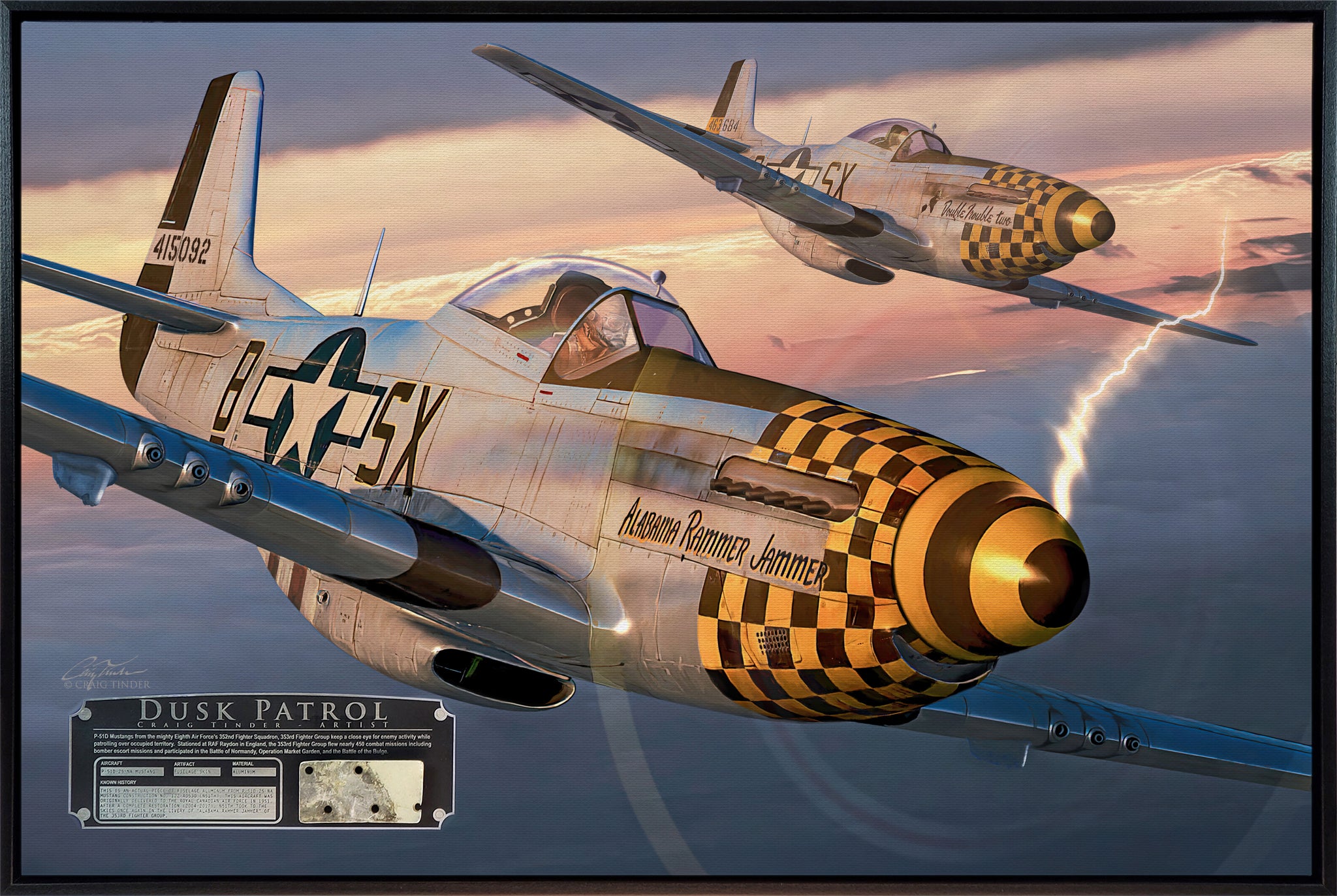








P-51 Mustang - Dusk Patrol Canvas | INCLUDES: Skin Relic

P-51 Mustang - Dusk Patrol Canvas | INCLUDES: Skin Relic
If you have any questions, you are always welcome to contact us. We'll get back to you as soon as possible, within 24 hours on weekdays.
Shipping Information
Use this text to answer questions in as much detail as possible for your customers.
Customer Support
Use this text to answer questions in as much detail as possible for your customers.
FAQ’s
Use this text to answer questions in as much detail as possible for your customers.
Contact Us
Use this text to answer questions in as much detail as possible for your customers.
Description
About the Relic & Process
 P-51D Mustang 44-73990 Skin relics from the 15-year restoration
P-51D Mustang 44-73990 Skin relics from the 15-year restoration
This particular fragment of a P-51D-25-NA Mustang came from the fuselage panel of aircraft 44-73990 (Construction No. 122-40530). Built in 1944, it initially served with the US Army Air Force before being transferred to the Royal Canadian Air Force in 1951.
After changing hands several times, the aircraft eventually joined the air racing circuit under the name "Pigeon Chaser." It was flown by the legendary R.A. "Bob" Hoover as the pace plane for the 1971 Cape May National Air Races. P-51D Mustang 44-73990 Air Racer "Pigeon Chaser"
P-51D Mustang 44-73990 Air Racer "Pigeon Chaser"
From 2000 to 2015, the aircraft underwent extensive restoration and is now painted in the livery of "Alabama Rammer Jammer," representing the 353rd Fighter Group, the same unit featured in the artwork. P-51D Mustang 44-73990 "Alabama Rammer Jammer"
P-51D Mustang 44-73990 "Alabama Rammer Jammer"
Disclaimer
By purchasing from Aces In Action, you acknowledge that the product may vary slightly from the images on our website. We use authentic materials from military vehicles and relics, which may contain potentially hazardous substances. These items are not intended for ingestion, inhalation, or use by children. Aces In Action is an independent company, unaffiliated with or endorsed by any other organization. All names, logos, and trademarks are the property of their respective owners and are used for identification only, in accordance with the Lanham Act. Their use does not imply any official endorsement.
